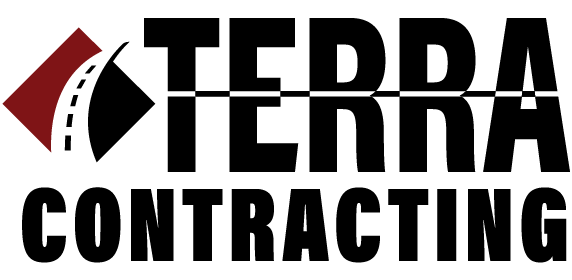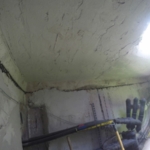Damage to your asphalt surface is not always caused by exposure to the elements or weather. Oftentimes, it can be the beautiful trees that increase the curb appeal of your property and provide much desired shade during the hot summer months. Unfortunately, these mature and attractive trees can have roots that cause damage to an asphalt surface that may cause a trip hazard and potential liability due to an injury from a fall. Should the asphalt surface heave and break the jagged edges created, extreme cases can also cause tire damage to vehicles.
Proper landscape planning, as well as deep watering (so that roots grow down rather than spread in search of water), will often prevent such occurrences; however, there are still some things that can be done to minimize future damage in spite of less than desirable tree placement or maintenance.
Here are some tips:
1. Small cracks may mean small roots
If you see areas where the asphalt is being pushed up, chances are tree roots are already trying to snake their way out through the asphalt. Very small or fine roots may be visible through gaps. In this situation, we recommend cutting away or using infrared heat to remove the damaged portion of the pavement and then trim the small roots all the way back to the tree. Once this is complete, we also suggest that you have a root barrier installed (see next tip) to prevent the roots from growing back and re-damaging your repairs.
2. Install a physical root barrier
These solid barriers are made of either metal, fiberglass, or high-density polyethylene (HDPE), blocking root-growth, and encouraging growth away from pavement surfaces.
The best time to install root barriers is when the tree is being planted. If dealing with the roots of a mature tree, they can be installed while making repairs. Root barriers should be installed vertically, below ground level, and surrounding the tree. The open side of the barrier should face away from the asphalt surface to “guide” roots away from your driveway, curb, or parking lot as a long-term solution for root maintenance. Chemical root barriers are not recommended, as they can harm trees and the environment.
3. Do not cut or remove large roots
Large roots are a tree’s support system! Removing the large roots can cause the tree to grow weak with the possibility of ultimately dying. With our high desert wind warnings, trees with a compromised or unstable root system can topple over, causing property damage and injuries to occupants and visitors. The last thing you need is for your asphalt repair to lead to more repairs or a legal issue resulting from negligent root management.
4. Seek advice from a professional arborist
Arborists can inspect the trees growing on your property and help you determine which one(s) might be causing damage to your paved surfaces and provide you with the best plan of action. A professional asphalt contractor should also be at this meeting to ensure that the proper root management solution is implemented. As a last resort, tree removal may be the only option.
We highly encourage you to address issues related to landscaping, as the damage will only get worse with time. If you have asphalt surface, sidewalk, or curb damage being caused by roots, contact us. We can help you assess the damage and develop an action plan to fix the problem.
Terra Contracting’s primary expertise is in asphalt installation, repair and maintenance. Our team is experienced in providing asphalt to new construction projects, as well as performing maintenance on existing commercial and residential properties. Our focus is on providing a quality product delivered with optimal efficiency. The streamlined process we employ involves our trucks bringing the asphalt to the site, placing the asphalt into the paver, laying down the mat and quickly rolling it. This process allows the pavement to reach full compaction with a smooth finish before the product hardens.


